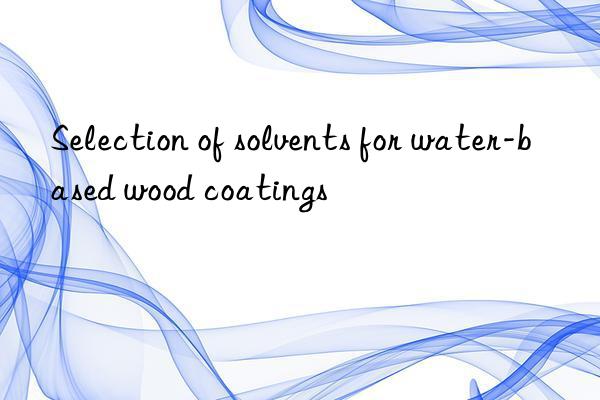
The basic composition of water-based wood paint
Similar to oil-based wood paint, the following factors contribute to water-based wood paint Orientation:
- 1. System quick drying
- 2. Appropriate rheology curve
- 3. Leveling
- 4. Single thin spray
- 5. Good dispersion
Different from oil-based systems, the biggest difficulty in water-based systems is the lack of special filler directional additives. For example, it is difficult to find products similar to oil-based polyamide wax or oil-based polyamide waxes in water-based systems. CAB is an additive that has special effects on filler orientation. Therefore, water-based formulation workers must be more patient in screening additives on the market to meet the above five factors.
At present, with the introduction of major raw material suppliers Water-based wood paint raw material products are available, so R&D personnel can obtain a large number of recommended formulas for water-based wood paint. It is worth noting that foreign water-based wood paints have extremely strict requirements on construction processes and conditions during construction. Therefore, the formulas provided by foreign suppliers may have differences in their construction processes and conditions. It can obtain very excellent surface effects under certain conditions.However, domestic customers usually require oily construction standards. Therefore, it is usually difficult to obtain satisfactory performance or surface effects. Therefore, when customers refer to these formulas, they need to Understand this.
Selection of film-forming additives
Similar to the true solvent and co-solvent in solvent-based coatings, film formation in water-based systems Auxiliaries play a similar role and can also be classified accordingly. Regarding the drying of water-based paints, there is a classic evaluation: The drying of solvent-based paints is dominated by temperature and interfered by humidity; the drying of water-based paints is dominated by humidity and interfered by temperature.
Selection of film-forming aids and Matching is critical to paint performance. If a formula performs well, it is because of the film-forming additives; and vice versa. However, the process of volatilization of film-forming additives from the system is extremely complicated, especially for mixed solvents, and an accurate description cannot be given so far.
Related data on some film-forming additives (for reference)
| Film-forming additives | Boiling point/℃ | Surface tension (25℃)/(mN/ m) | Evaporation (Bu AC=100) | Up to 90% evaporation time/s | Water solubility/% | Solubility of water in it/% |
| B Glycol monobutyl ether | 170.2 | 27.4 | 7.9 | 7000 | ∞ | ∞ |
| Diethylene glycol monomethyl ether | 194.1 | 24.6 | 1.9 | 29400 | ∞ | ∞ |
| Diethylene glycol monoethyl ether | 201 | 31.7 | 1 | - | ∞ | ∞ |
| Diethylene glycol monobutyl ether | 230.4 | 30 | 0.4 | 190000 | ∞ | ∞ |
| Propylene glycol monomethyl ether | 120 | 27.7 | 16 | 3.5 | ||
| Texanol | 245 | 30.7 | 0.13 | 355000 | 0 | 0.9 |
| EEP | 169.7 | 28.1 | 12 | - | 5.2 | 2.2 |
| n-pentyl Propionate | 144.2 | 26.4 | 20 | - | 0.05 | 0.03 |
| Water | - | - | 30 | - | - | - |



 微信扫一扫打赏
微信扫一扫打赏
